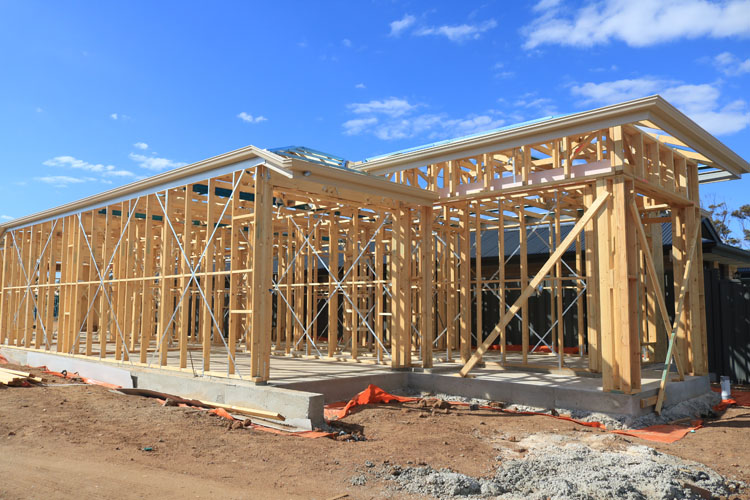When it comes to constructing a home or commercial building, the choice of materials plays a crucial role in ensuring structural integrity and longevity. Among the various options available, timber wall frames have gained popularity for their strength, durability, and aesthetic appeal. In this comprehensive guide, we will explore the benefits of timber wall frames, the factors that contribute to their strength and durability, and considerations for choosing the right timber for your project.
Understanding Timber Wall Frames
Timber wall frames are structural elements made from wood that support the walls of a building. They consist of vertical studs, horizontal plates, and diagonal braces, forming a framework that supports various types of wall cladding. Timber frames are commonly used in residential construction, commercial buildings, and even in some industrial applications. The versatility of timber allows for various designs, making it an attractive option for builders and architects alike.
Benefits of Timber Wall Frames
- Strength and Stability: Timber is known for its high strength-to-weight ratio, which means it can support significant loads without being excessively heavy. This makes timber wall frames a robust choice for both single and multi-story structures. Properly constructed timber frames can withstand various environmental stresses, including wind loads and seismic activity.
- Durability: When properly treated and maintained, timber wall frames can last for decades. Many species of timber, such as hardwoods, are naturally resistant to decay, insects, and moisture. Additionally, modern treatments can further enhance their durability, making them suitable for a wide range of climates and conditions.
- Sustainability: Timber is a renewable resource, making it an eco-friendly choice for construction. When sourced from sustainably managed forests, timber wall frames have a lower carbon footprint compared to steel and concrete. Furthermore, timber’s ability to sequester carbon during its growth phase contributes to reducing overall greenhouse gas emissions.
- Aesthetic Appeal: Timber wall frames offer a warm and inviting aesthetic that can enhance the overall look of a building. Exposed timber frames can add character to a space, making it feel more organic and connected to nature. This aesthetic versatility allows for various architectural styles, from traditional to contemporary designs.
Factors Contributing to Strength and Durability
Several factors contribute to the strength and durability of timber wall frames:
1. Quality of Timber
The strength and durability of timber wall frames heavily depend on the quality of the timber used. Select high-grade timber with minimal defects, such as knots, cracks, or warping. Commonly used timber species include:
- Pine: Lightweight and cost-effective, pine is a popular choice for framing due to its availability and ease of use.
- Hardwood: Species like oak and jarrah provide excellent strength and durability, making them suitable for high-load applications.
- Engineered Timber: Laminated veneer lumber (LVL) and glulam are engineered products that offer enhanced strength and stability, reducing the likelihood of warping or splitting.
2. Moisture Control
Moisture is one of the main threats to timber durability. High moisture content can lead to decay, mold growth, and structural failure. To mitigate these risks:
- Use treated timber that is resistant to rot and insects.
- Ensure proper ventilation in wall cavities to allow moisture to escape.
- Implement a robust waterproofing system to protect timber frames from rain and humidity.
3. Construction Techniques
The way timber wall frames are constructed significantly impacts their strength and durability. Consider the following techniques:
- Proper Joinery: Use reliable joinery methods, such as mortise and tenon, or modern metal connectors, to ensure strong connections between timber elements.
- Bracing: Incorporate diagonal bracing to improve the frame’s resistance to lateral forces, such as wind and seismic activity.
- Load Distribution: Ensure that loads are evenly distributed across the frame to prevent localized stress and potential failure.
4. Regular Maintenance
Regular maintenance is essential for preserving the strength and durability of timber wall frames. This includes:
- Inspecting the frames for signs of damage or decay, such as discoloration or soft spots.
- Reapplying protective finishes or treatments to prevent moisture penetration.
- Keeping the surrounding area clear of debris and vegetation that can trap moisture against the timber.
Choosing the Right Timber for Your Project
When selecting timber for wall frames, consider the following factors:
- Local Climate: Different timber species perform better in specific climates. For example, hardwoods are often more suitable for humid conditions due to their natural resistance to decay.
- Building Codes: Familiarize yourself with local building codes and regulations, as they may dictate specific timber grades or treatments required for wall frames.
- Budget: While timber can be cost-effective, high-quality or engineered timber may come at a higher price. Balance your budget with the long-term benefits of investing in durable materials.
Conclusion
Timber wall frames are an excellent choice for those seeking strength, durability, and aesthetic appeal in their building projects. By understanding the benefits of timber, the factors that contribute to its longevity, and how to select the right materials, you can ensure a solid foundation for your construction. With proper care and attention, timber wall frames can provide a reliable and beautiful structure that stands the test of time, making them a popular choice for builders and homeowners alike. Whether you’re planning a new home or renovating an existing structure, timber wall frames offer an enduring solution for modern construction needs.



